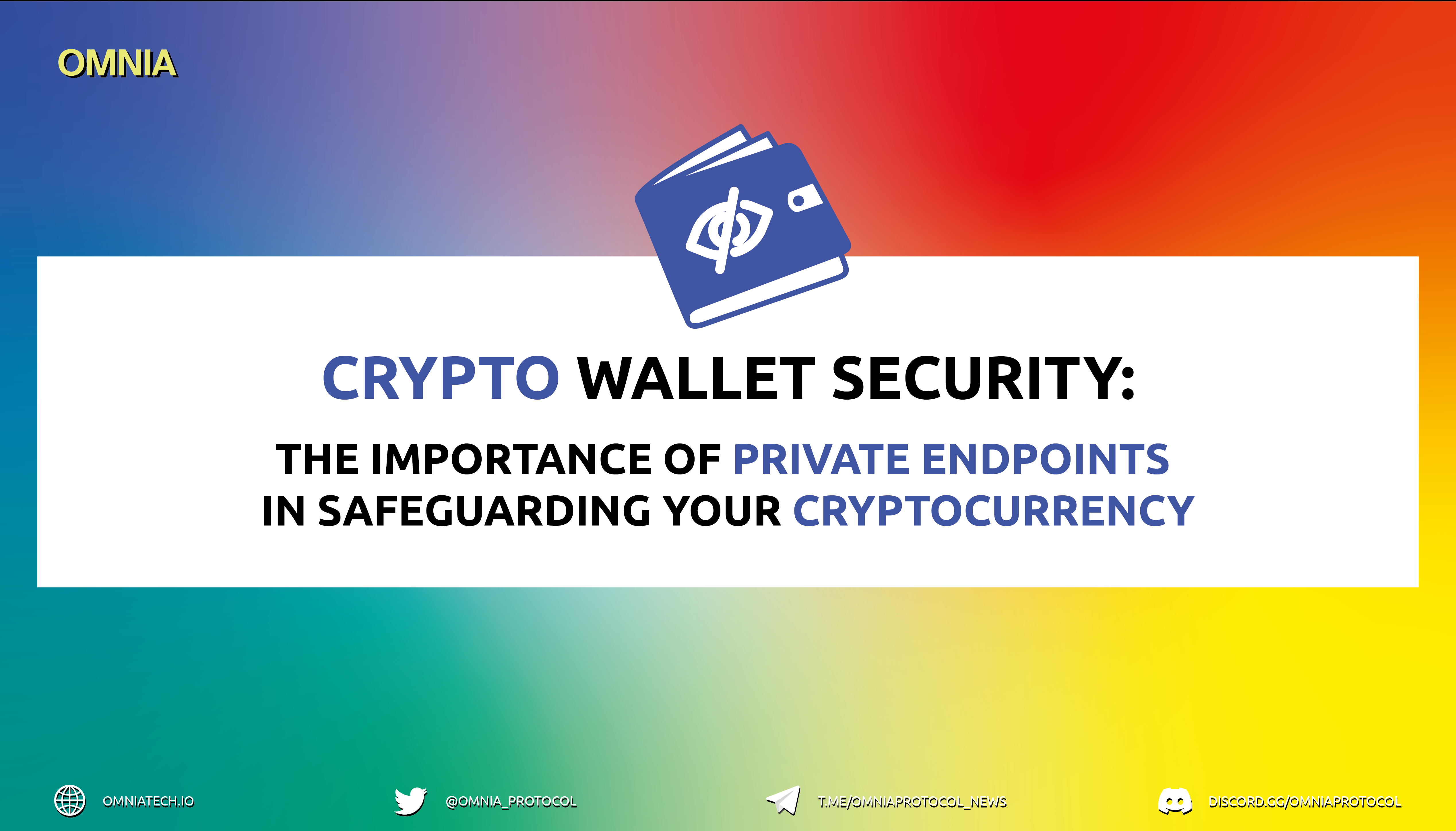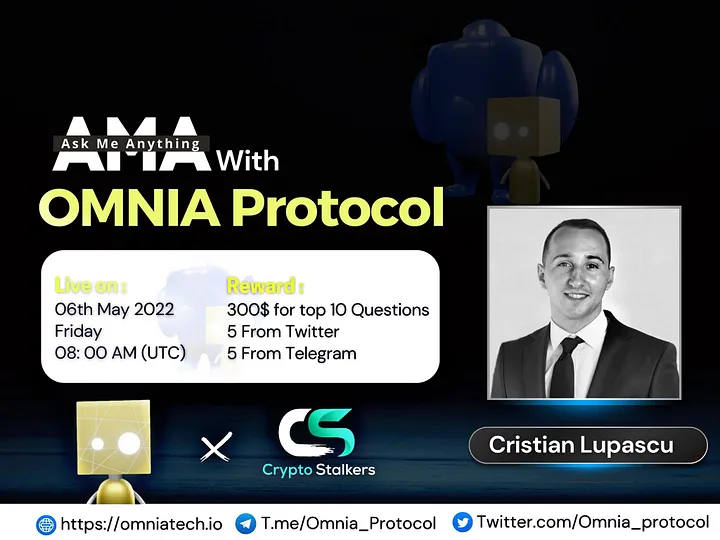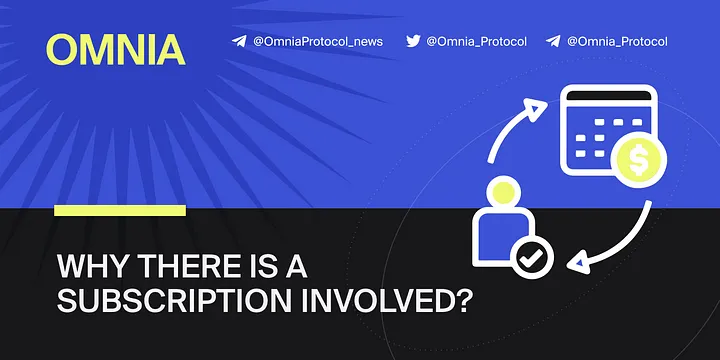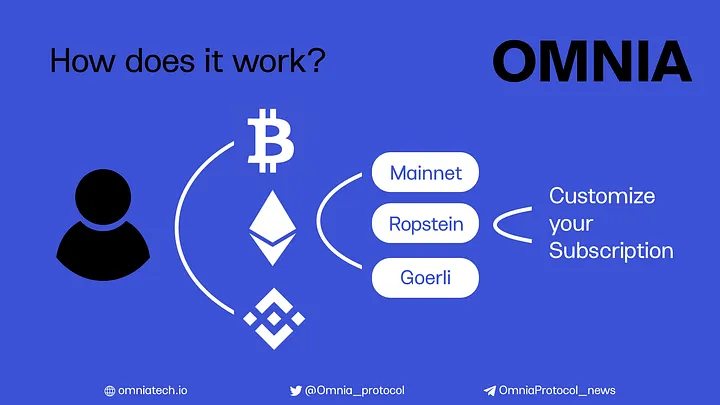
Omnia Protocol — How does it work ? (Part 1)
First things first — Omnia’s infrastructure consists of blockchain nodes and privacy relayers which act as decentralized API gateways for accessing the blockchain.
Node owners can register their nodes through a simple-to-use web interface provided by Omnia. Consequently, these nodes are indexed by the relayers who leverage mixnets to protect privacy.
The users of Omnia can customize their own subscription plan, depending on their blockchain request rate needs. As a result, users receive access to secure RPC endpoints for any of the blockchain networks that we support.
This part will focus on the user journey.
After landing on the Omnia’s dashboard, users can authenticate using any injected web3 provider and then go with the first option Generate endpoint.

Next step is to select the blockchain and its respective network to which the user needs access to. (Fig. 2)
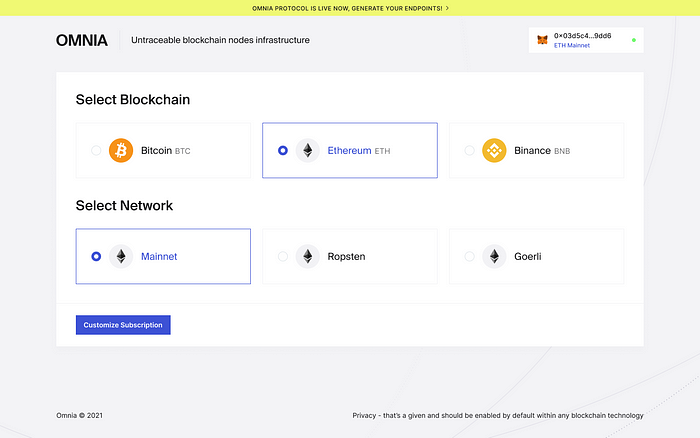
Users have the flexibility to customize their subscription based on their needs. There are 3 parameters that can be adjusted:
- Subscription period — can range from 1 day to more than 1 year
- Number of daily requests
- RPS Quota — the maximum number of requests per seconds

After payment is successful, Omnia generates and displays the secure endpoints for both HTTP and Websocket. Credentials leverage privacy enhancing technologies such as Zero-Knowledge Proofs to enable endpoint authentication and subscription validation.

See the dashboard prototype here. 🚀
Have a feedback for us? Reach out to [email protected]
